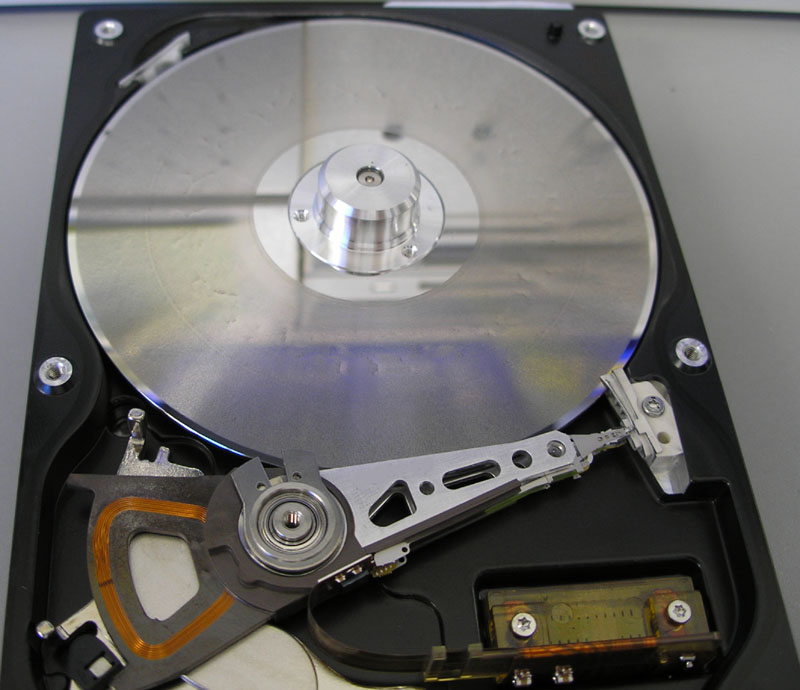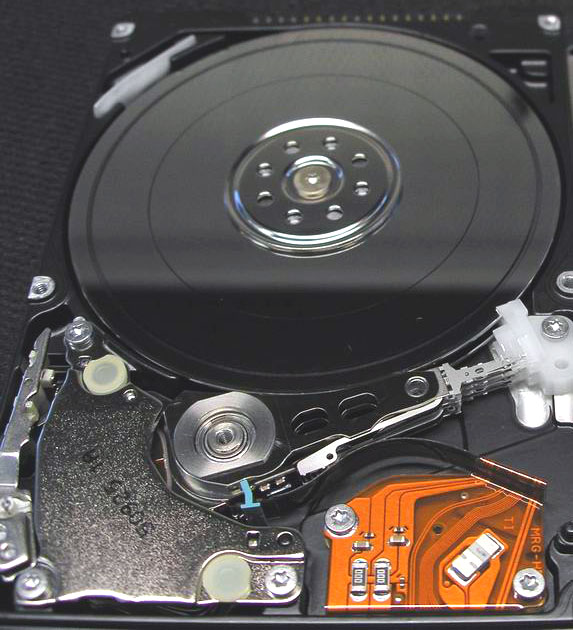The ext2 or second extended filesystem is a file system for the Linux kernel. It was initially designed by Rémy Card as a replacement for the extended file system (ext).
The canonical implementation of ext2 is the ext2fs filesystem driver in the Linux kernel. Other implementations (of varying quality and completeness) exist in GNU Hurd, MINIX 3, Mac OS X (third-party), Darwin (same third-party as Mac OS X but untested), some BSD kernels, in Atari MiNT, and as third-party Microsoft Windows drivers.
ext2 was the default filesystem in several Linux distributions, including Debian and Red Hat Linux, until supplanted more recently by ext3, which is almost completely compatible with ext2 and is a journaling file system. ext2 is still the filesystem of choice for flash-based storage media (such as SD cards, and USB flash drives) since its lack of a journal minimizes the number of writes and flash devices have only a limited number of write cycles. Recent kernels, however, support a journal-less mode of ext4, which would offer the same benefit along with a number of ext4-specific benefits.
History
The early development of the Linux kernel was made as a cross-development under the Minix operating system. Naturally, it was obvious that the Minix file system would be used as Linux's first file system. The Minix file system was mostly free of bugs, but used 16-bit offsets internally and thus only had a maximum size limit of 64 megabytes. There was also a filename length limit of 14 characters. Because of these limitations, work began on a replacement native file system for Linux.
To ease the addition of new file systems and provide a generic file API, VFS, a virtual file system layer was added to the Linux kernel. The extended file system (ext), was released in April 1992 as the first file system using the VFS API and was included in Linux version 0.96c. The ext file system solved the two major problems in the Minix file system (maximum partition size and filename length limitation to 14 characters), and allowed 2 gigabytes of data and filenames of up to 255 characters. But it still had problems: there was no support for separate access, inode modification and data modification timestamps.
As a solution for these problems, two new filesystems were developed in January 1993: xiafs and the second extended file system (ext2), which was an overhaul of the extended file system incorporating many ideas from the Berkeley Fast File System. ext2 was also designed with extensibility in mind, with space left in many of its on-disk data structures for use by future versions.
Since then, ext2 has been a testbed for many of the new extensions to the VFS API. Features such as POSIX ACLs and extended attributes were generally implemented first on ext2 because it was relatively simple to extend and its internals were well-understood.
On Linux kernels prior to 2.6.17,[1] restrictions in the block driver mean that ext2 filesystems have a maximum file size of 2TB.
ext2 is still recommended over journaling file systems on bootable USB flash drives and other solid-state drives. ext2 performs fewer writes than ext3 since it does not need to write to the journal. As the major aging factor of a flash chip is the number of erase cycles, and as those happen frequently on writes, this increases the life span of the solid-state device.[2] Another good practice for filesystems on flash devices is the use of the noatime mount option, for the same reason.
ext2 data structures
The space in ext2 is split up into blocks. These blocks are divided into block groups, analogous to cylinder groups in the Unix File System. There are typically thousands of blocks on a large file system. Data for any given file is typically contained within a single block group where possible. This is done to reduce external fragmentation and minimize the number of disk seeks when reading a large amount of consecutive data.
Each block group contains a copy of the superblock and block group descriptor table, and all block groups contain a block bitmap, an inode bitmap, an inode table and finally the actual data blocks.
The superblock contains important information that is crucial to the booting of the operating system, thus backup copies are made in multiple block groups in the file system. However, typically only the first copy of it, which is found at the first block of the file system, is used in the booting.
The group descriptor stores the location of the block bitmap, inode bitmap and the start of the inode table for every block group and these, in turn are stored in a group descriptor table.
Inodes
Every file or directory is represented by an inode. The inode includes data about the size, permission, ownership, and location on disk of the file or directory.
Example of ext2 inode structure:
Quote from the linux kernel documentation for ext2:
"There are pointers to the first 12 blocks which contain the file's data in the inode. There is a pointer to an indirect block (which contains pointers to the next set of blocks), a pointer to a doubly-indirect block (which contains pointers to indirect blocks) and a pointer to a trebly-indirect block (which contains pointers to doubly-indirect blocks)."
So, there is a structure in ext2 that has 15 pointers, the first 12 are for direct blocks. Pointer number 13 points to an indirect block, number 14 to a doubly-indirect block and number 15 to a trebly-indirect block.
Directories
Each directory is a list of directory entries. Each directory entry associates one file name with one inode number, and consists of the inode number, the length of the file name, and the actual text of the file name. To find a file, the directory is searched front-to-back for the associated filename. For reasonable directory sizes, this is fine. But for huge large directories this is inefficient, and ext3 offers a second way of storing directories that is more efficient than just a list of filenames.
The root directory is always stored in inode number two, so that the file system code can find it at mount time. Subdirectories are implemented by storing the name of the subdirectory in the name field, and the inode number of the subdirectory in the inode field. Hard links are implemented by storing the same inode number with more than one file name. Accessing the file by either name results in the same inode number, and therefore the same data.
The special directories "." and ".." are implemented by storing the names "." and ".." in the directory, and the inode number of the current and parent directories in the inode field. The only special treatment these two entries receive is that they are automatically created when any new directory is made, and they cannot be deleted.
Allocating Data
When a new file or directory is created, the EXT2 file system must decide where to store the data. If the disk is mostly empty, then data can be stored almost anywhere. However, performance is maximized if the data is clustered with other related data to minimize seek times.
The EXT2 file system attempts to allocate each new directory in the group containing its parent directory, on the theory that accesses to parent and children directories are likely to be closely related. The EXT2 file system also attempts to place files in the same group as their directory entries, because directory accesses often lead to file accesses. However, if the group is full, then the new file or new directory is placed in some other non-full group.
The data blocks needed to store directories and files can found by looking in the data allocation bitmap. Any needed space in the inode table can be found by looking in the inode allocation bitmap.
File system limits
Theoretical ext2 filesystem limits under Linux[3]
| Block size: |
1 KB |
2 KB |
4 KB |
8 KB |
| max. file size: |
16 GB |
256 GB |
2 TB |
2 TB |
| max. filesystem size: |
4* TB |
8 TB |
16 TB |
32 TB |
The reason for some limits of the ext2-file system are the file format of the data and the operating system's kernel. Mostly these factors will be determined once when the file system is built. They depend on the block size and the ratio of the number of blocks and inodes. In Linux the block size is limited by the architecture page size.
There are also some userspace programs that can't handle files larger than 2 GB.
The maximum file size is limited to min( ((b/4)3+(b/4)2+b/4+12)*b, 232*b ) due to the i_block (an array of EXT2_N_BLOCKS) and i_blocks( 32-bits integer value ) representing the amount of b-bytes "blocks" in the file.
The limit of sublevel-directories is 31998 due to the link count limit. Directory indexing is not available in ext2, so there are performance issues for directories with a large number of files (10,000+). The theoretical limit on the number of files in a directory is 1.3 × 1020, although this is not relevant for practical situations.
Note: In Linux kernel 2.4 and earlier block devices were limited to 2 TB, limiting the maximum size of a partition regardless of block size.
Compression extension
e2compr is a modification to the ext2 file system driver in the Linux kernel to support online compression and decompression of files on file system level without any support by user applications.
e2compr is a small patch against the ext2 file system that allows on-the-fly compression and decompression. It compresses only regular files; the administrative data (superblock, inodes, directory files etc.) are not compressed (mainly for safety reasons). Access to compressed blocks is provided for read and write operations. The compression algorithm and cluster size is specified on a per-file basis. Directories can also be marked for compression, in which case every newly created file in the directory will be automatically compressed with the same cluster size and the same algorithm that was specified for the directory.
e2compr is not a new file system. It is only a patch to the ext2 file system made to support the EXT2_COMPR_FL flag. It does not require you to make a new partition, and will continue to read or write existing ext2 file systems. One can consider it as simply a way for the read and write routines to access files that could have been created by a simple utility similar to gzip or compress. Compressed and uncompressed files coexist nicely on ext2 partitions.
The latest e2compr-branch is available for current releases of 2.6 and 2.4 Linux kernels, but development is stalled. There are also older branches for older 2.0 and 2.2 kernels, which are more stable.
See also
References
- Notes
Further reading
External links
![]()


















